Nationality Russian-American Name Charles Birger | Other names Charlie Birger | |
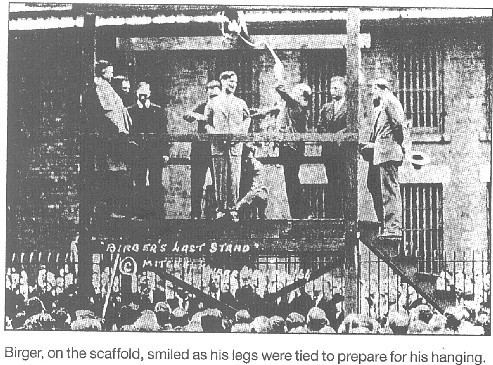 | ||
Full Name Shachnai Itzik Birger Known for Being a bootlegger and the criminal leader of the Birger Gang, who fought a bloody war with the Ku Klux Klan and the Shelton Brothers Gang, over the domination of Southern Illinois. Birger was the last person to be publicly hanged in Illinois. Died April 19, 1928, Benton, Illinois, United States | ||
Charles "Charlie" Birger, born Shachna Itzak Birger (1881 – April 19, 1928), was an American bootlegger during the Prohibition period in Southern Illinois.
Contents
- Early life
- Bootlegger and gang leader
- War with the Ku Klux Klan
- War with the Shelton Brothers Gang
- Hanging of Charlie Birger
- References
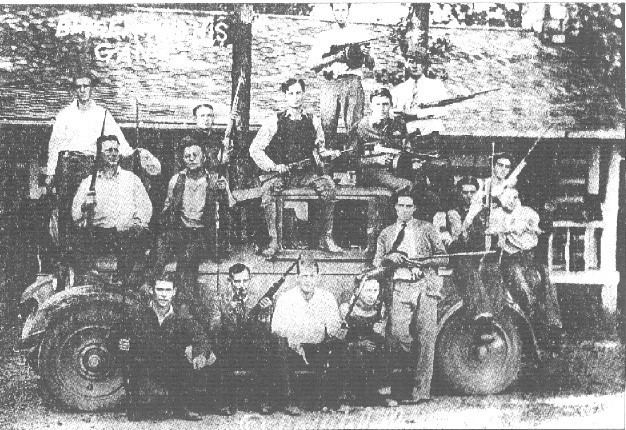
Early life
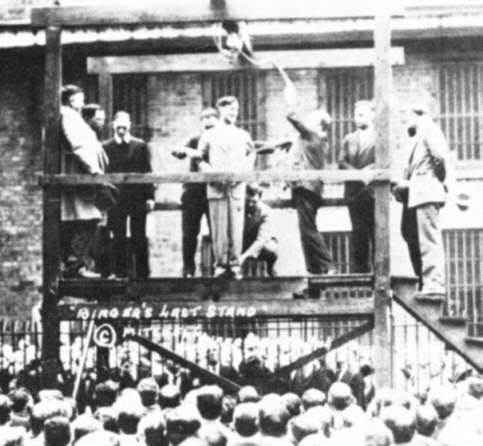
Charles Birger was born to a Jewish family in Adygea, in the Russian Empire and emigrated to the United States, as a child, with his parents. U.S. Army records show Charlie Birger enlisted, at age 20, in St. Louis on July 5, 1901, and was assigned to Company G of the newly formed 13th Cavalry Regiment, which was stationed in South Dakota. Birger was described as a good soldier and was honorably discharged on July 4, 1904, at Fort Meade, South Dakota. When he left the army, he became a cowboy. However, he eventually returned to Illinois, where he married and became first, a miner in the quickly expanding coal mining community of Harrisburg, then a saloon keeper.
Bootlegger and gang leader
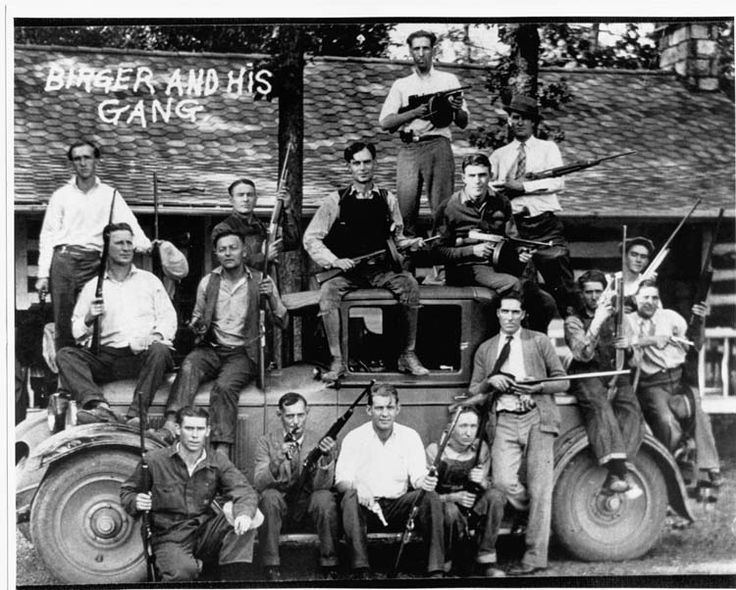
Following World War I, in 1919, the United States adopted national prohibition, which banned the sale, manufacture, and transportation of alcoholic beverages in the country. Charlie saw this as a business opportunity and in 1920, joined forces with the Shelton Brothers .

Charlie had his initial base of operation in Harrisburg, Southern Illinois. The authorities in Saline County eventually, invited him to leave, after which he built a fortified speakeasy named Shady Rest just across the line in Williamson County. Shady Rest was located off old Highway 13, half way between Harrisburg and Marion. A small barbecue stand just off the highway served as the guard shack.
War with the Ku Klux Klan

Charlie Birger and the rival Shelton Brothers Gang fought for control of the coal fields of southern Illinois, but their attention was soon diverted by a common enemy. In the 1920s the Ku Klux Klan supported prohibition. Alcohol was viewed as an "un-American" vice practiced by immigrants, many of whom belonged to the Catholic Church and other religions. Many immigrants worked in the coal mines of southern Illinois, living mainly in very small towns with a strong ethnic identity. Alcohol was a part of their life, and bootlegging came naturally to them.
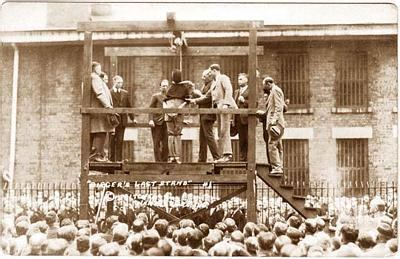
In the spring of 1923, the Klan began organizing in Williamson County, holding meetings attended by more than 5000 people. The Klan drew its support from both the farming community and people in the larger towns, the latter mainly of southern origin and belonging to the Baptist and other traditional Protestant churches.
The Klan soon found a charismatic leader in S. Glenn Young, a 58-year-old former federal law enforcement officer. Large mobs began going door to door, forcibly searching houses for alcohol. If alcohol was found, the occupants were taken to Klan "prisons". Federal authorities apparently had deputized the Klansmen to aid in the enforcement of Prohibition.
Many elected public officials of Williamson County were viewed as being allies of the bootleggers, perhaps correctly. These elected public officials were driven from office and replaced by Klan members. The state government was either unable or unwilling to reestablish lawful authority.
On January 24, 1925, a shot was fired in the street in Herrin, Illinois. Deputy Sheriff Ora Thomas responded and walked into a cigar store, where he saw Klan leader Young. Thomas drew his pistol and shot Young twice. Young was able to shoot Thomas once before falling to the floor. Two of Young's companions joined in the melee, and all four men were fatally wounded. The Klan held a public funeral for Young that was attended by more than 15,000 people.
In April 1926, Charlie Birger and the Shelton Brothers joined forces to attack the remaining Klan leaders in Herrin, using Tommy guns and shotguns. The police were called repeatedly, but did not respond. The Klan buried its dead and the coroner ruled that the deaths were homicides "by parties unknown."
Although the Klan's losses were not large, the Herrin attack broke the back of the local KKK. Lawfully elected officials returned to their offices, and Birger and the Shelton Brothers went back into business.
War with the Shelton Brothers Gang
Charlie Birger regarded Harrisburg as his hometown. He would not tolerate crime in Harrisburg. When a small shop was robbed, Birger publicly made good the owner's losses and the suspected thief was found shot dead a few days later. This incident coincided with the beginning of his war with the Shelton Brothers Gang. It would be fought over control of bootlegging in the area.
By October 1926, the Birger and Shelton Gangs were in open conflict. Both gangs built "tanks" - trucks converted into makeshift armored vehicles from which they could shoot. The Shelton Gang even tried to bomb Shady Rest from the air. The dynamite they dropped missed. Many were killed during the war and it was sometimes, not clear which side they were on. Three deaths became important in ending Birger's own life.
Joseph Adams was the mayor of West City, Illinois, a village near Benton. Birger learned that the Sheltons' tank was in Joe Adams' garage for repairs. Charlie demanded the tank. When Adams failed to surrender it, Birger's men orchestrated a drive-by bombing, destroying Adams' front porch.
In December 1926, two men (Harry and Elmo Thomasson) appeared at Joe Adams' house, announcing that they "had a letter from Carl [Shelton]". They handed a letter to Adams. As he started to read it, they drew their pistols and shot him dead.
The following month, the Shady Rest was destroyed by a series of large explosions and an ensuing fire. Four bodies (one a woman's) were found in the ruins, charred beyond recognition. This was widely seen as a decisive blow struck by the Sheltons.
At about the same time, Illinois state trooper Lory Price and his wife went missing. Price was widely believed to be associated with the Birger gang. He had been running a scam in which Birger would steal cars and hide them until a reward was offered. Then the trooper would pretend to find the cars and split the reward with Birger.
Hanging of Charlie Birger
In June 1927, Birger was arrested on a charge of ordering the murder of Joe Adams. Birger allowed himself to be taken into custody without a fight. He had been arrested many times, and had always been released a few days later. He may not have realized he would be tried in Franklin County, one that he did not control.
Birger and the two men who did the killing were convicted; however, only Birger was sentenced to hang. Birger objected that it was unfair he should hang while the confessed trigger man was sentenced only to prison. Nevertheless, Birger was hanged for the murder of Joe Adams on April 19, 1928, at the Franklin County Jail in Benton. At Birger's request, he was accompanied to the gallows by a rabbi and wore a black hood rather than a white one, since he did not want to be mistaken for a Klansman. Charlie Birger was next to last man to be executed in a public hanging in Illinois (Charles Shader was hanged October 10 of that year). He shook hands with the hangman, the "humane hangman" Philip Hanna, and his final words were, "It's a beautiful world." (Local southern Illinois legend attests that Birger said "It's a beautiful day", in defiance, while the newspapers reported the remorseful "It's a beautiful world.")
Birger's place as a southern Illinois folk legend is recorded in John L. "Ox" Gwaltney's "Charlie Birger"
Charlie Birger is buried in Chesed Shel Emeth Cemetery in University City, Missouri, a suburb of St. Louis. His marker bears his birth name of Shachna Birger. His sister (Mrs. Rachel Shamsky) and one of his two daughters are buried nearby.
Birger's name entered the news again in 2006 when the granddaughter of the sheriff who had supervised the execution sued the local historical museum in an attempt to regain possession of the noose used in the hanging.
